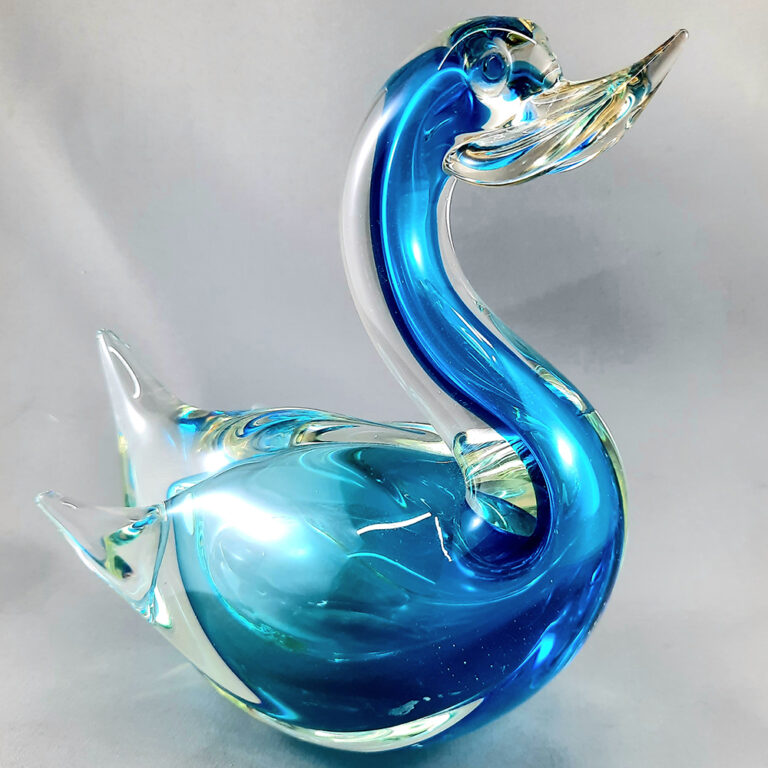
Art Glass, with its splendid aesthetics and intricate designs, is a fascinating aspect of the decorative arts world. It often features handcrafted, coloured, and meticulously designed elements that create striking patterns and forms. Let's delve into the enchanting realm of Art Glass, exploring its origins, styles, prominent Australian artists, and how you can incorporate it into your own spaces.
The History of Art Glass
Art Glass boasts a rich history that dates back centuries, beginning with glass artisans in ancient civilisations like Egypt and Rome. The Art Nouveau movement of the late 19th and early 20th centuries, with its emphasis on natural forms and structures, catapulted Art Glass into popularity. This period ushered in a surge in creativity and innovative techniques in glassmaking, giving birth to distinctive designs that continue to captivate today.
Styles of Art Glass
Art Glass is renowned for its diversity, featuring numerous styles, each with its unique charm. Here are some iconic styles:
Stained Glass
Prominently featured in religious buildings like cathedrals, it involves combining coloured glass pieces to form images or patterns.
Blown Glass
This style uses the technique of blowing air into a gathering of molten glass to form diverse shapes and designs.
Fused Glass
This technique involves melting together different pieces of glass to create a single, intricately designed piece.
Highlighting Australian Art Glass Artists
Australia has a thriving Art Glass scene, with local artisans creating breathtaking designs inspired by the country's natural beauty. Notable artists include Nick Mount, renowned for his globally lauded perfume bottles and platters, and Amanda Louden, famous for her marine-inspired works. Their exquisite creations have helped put Australia firmly on the global Art Glass map.
Caring for Art Glass
Proper care and handling can help maintain the beauty of Art Glass. Here are some tips:
- Dust your Art Glass regularly with a soft cloth or a feather duster.
- Use a mild, non-abrasive cleaner for grime or fingerprints, gently wiping the glass.
- Handle Art Glass with clean hands to avoid transferring oils or dirt onto the surface.
Displaying Art Glass
How you display Art Glass can accentuate its beauty. Consider these tips:
- Position Art Glass near a light source to let the colours and designs shine.
- Avoid areas with drastic temperature changes to prevent damage.
- Give each piece its own space to command attention.
Art Glass represents a splendid fusion of art and craftsmanship. It has the power to transform ordinary spaces into visually captivating ones. By understanding its history, and styles, and by giving it the right care and display, your Art Glass can be a cherished element of your home décor or art collection for years to come. As we continue to appreciate and preserve this beautiful craft, the legacy of Art Glass is set to enchant future generations.
Frequently Asked Questions
What is the difference between Art Glass and regular glass?
Art Glass refers to pieces of glass that have been designed for decorative or artistic purposes, often featuring intricate patterns, vibrant colours, and complex forms. It is usually handcrafted and can come in various styles, like stained, blown, or fused glass. Regular glass, on the other hand, is typically machine-made and used for utilitarian purposes, such as windows, drinkware, or tableware. It usually lacks the artistic detailing found in Art Glass.
Can Art Glass be repaired if it gets damaged?
Yes, in many cases, damaged Art Glass can be repaired, but the success of the repair largely depends on the nature and extent of the damage. Highly skilled glass artisans or restorers usually perform the repairs. However, it's essential to remember that the repair may not always render the piece identical to its original state.
How can I verify the authenticity of an Art Glass piece?
Verifying the authenticity of an Art Glass piece can be achieved through various ways: check for a maker's mark or signature; consult a knowledgeable dealer or appraiser; refer to Art Glass reference books or online databases; and examine the quality, craftsmanship, and features of the piece.
Are there any Australian Art Glass exhibitions I can visit?
Yes, there are several exhibitions and galleries in Australia where you can appreciate Art Glass. The National Art Glass Collection in Wagga Wagga and the Canberra Glassworks are all renowned for their impressive displays of Art Glass.
Can Art Glass be used functionally, or is it purely decorative?
While Art Glass is often used for decorative purposes, certain pieces can also have functional uses. For instance, some artisans create Art Glass vases, bowls, or lamps. However, due to their value and fragility, they are often used more for their aesthetic appeal than for everyday use.